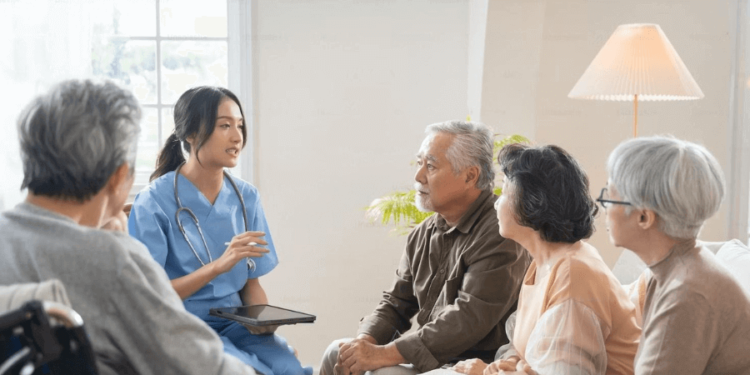Caring for non-verbal and communication-impaired seniors’ mental health requires a specialized, empathetic approach. Effective communication is fundamental to wellbeing, yet those with speech and communication challenges often struggle to express emotions, preferences, and needs. In recent years, advanced technology and therapeutic techniques have transformed how therapists engage this unique group.
This article explores the innovative tools and strategies empowering therapists to bridge communication gaps.
Incorporating Assistive Communication Devices
Speech-generating devices (SGDs) and tablet apps are indispensable tools therapists can incorporate. As Forbes highlights, AI voice tech advances enable new possibilities for varied impairments. Programs describing images and text make information accessible for the visually impaired.
Text-to-speech and speech-to-text have proven invaluable for those with brain injuries, enabling easier comprehension and communication. Google’s Parrotron, for instance, transforms distorted speech into coherent conversation, empowering those with speech impairments to effectively express themselves.
Enhanced Care Through EMR Integration
Integrating Electronic Medical Records (EMRs) into therapy represents a transformative step toward enhanced senior care. Mental health EMRs facilitate comprehensive profiles with communication preferences, progress notes, and individualized plans.
As Psyquel notes, digital records help therapists accurately track progress, enabling consistent approaches. EMRs also enhance provider collaboration for holistic understanding of mental health needs. Streamlined EMR integration significantly improves patient-centered, tailored care quality.
Incorporating Augmentative and Alternative Communication
Augmentative and alternative communication (AAC) techniques are invaluable for enhanced communication. These include gestures, sign language, and interpreting body language. By implementing AAC approaches, therapists can effectively engage communication-challenged seniors through reciprocal expressions and gestures.
As Cureus notes, AAC is especially beneficial for those with significant language impairments, providing alternate communication channels while encouraging language processing brain reorganization. Brain injuries can impact comprehending and using non-literal language, gestures, and social cues. Skilled therapists can systematically introduce AAC methods to promote adaptive neuroplasticity.
Adopting Multisensory Therapy
Multisensory therapy stimulates senses like vision, hearing, touch, smell and taste. It is significant for seniors as aging often decreases sensory effectiveness.
Elizabeth Rhodus, Ph.D. emphasizes enhancing sensory input to improve behavioral symptoms, especially for dementia. Carefully chosen items like lavender lotion, weighted blankets, and visual cues like red tape play pivotal roles, enhancing environments through purposeful sensory changes rather than medication. This helps non-verbal seniors feel safer, happier, and more comfortable, improving wellbeing.
Utilizing Virtual Reality Therapy
Virtual reality (VR) therapy represents a cutting-edge approach for communication-impaired seniors’ mental health. Custom VR programs offer immersive engagement avenues.












